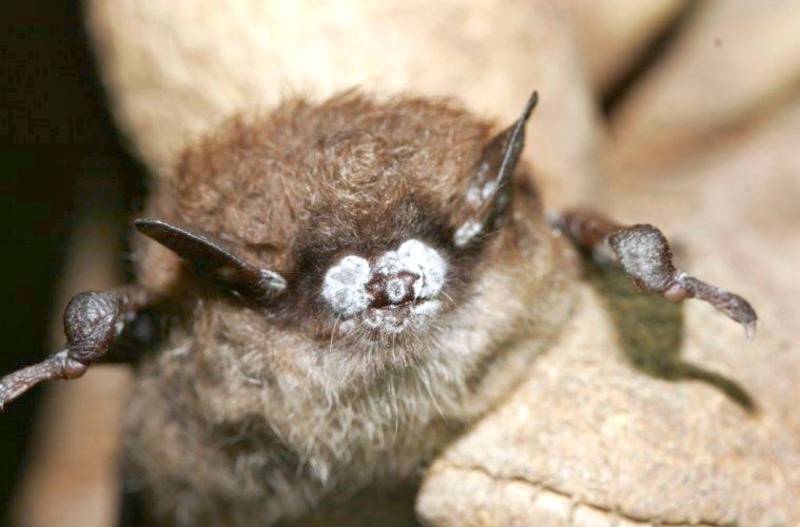All-Body Athlete’s Foot
White-nose syndrome is a fungal infection that grows on the skin of bats while they hibernate. Osborn describes it as an “all-body case of athlete’s foot.” The infection irritates the bats, waking them from what should be a deep slumber.
They then use up their stored energy by grooming themselves. Because it’s winter, most of the bugs and insects that make up their food supply aren’t available, and the bats can’t replenish themselves. They die of starvation.
“It is not pleasant,” said Osborn. “The disease is extremely lethal where bats hibernate deeply for a long period in the winter.”
While the discovery of DNA evidence of the fungus is troubling, officials have yet to document a case of actual white-nose syndrome in California bats, or an indication that the fungus itself is affecting the animals.
“This is what we would expect to see in terms of how it starts to show up, at low levels with spring detections,” said Alice Chung-MacCoubrey, a bat biologist with the National Park Service. “It’s not surprising, it was just disappointing because everybody wants to keep getting negative results from their surveillance as long as possible.”
Different Hibernation Patterns
How the fungus will impact California bats is unclear. In caves, mines and other hibernaculum in the Northeast, the disease has wiped out nearly the entire population of some colonies.
But northeastern bats hibernate congregated together in large roosts of thousands or even tens of thousands. The suspicion is that California bats hibernate in much smaller roosts dispersed across larger areas, but officials know much less about bat hibernation patterns in the state.
“The big question we’re asking,” said Bronwyn Hogan, a wildlife biologist with the U.S. Fish and Wildlife Service, is “‘what does this mean for the fungus spreading and development of the disease? We don’t have a great idea about that yet.”
Still, Hogan said, officials are especially concerned about the fate of little brown bats, which are common in California, as well as about other hibernating species.
White-nose syndrome has been confirmed in 33 states, and the fungus in an additional five including California.
Scientists and wildlife managers are searching for treatments and solutions that could be used to help infected bats, but Hogan said they have yet to find a workable solution.
Officials on the Lookout
Now that the fungus has been officially detected, wildlife officials are expanding their bat surveillance across Northern California. They will begin a baseline study of bat populations later this summer, using acoustic monitoring devices and a count of bats as they leave their roosts.
“If the disease does start impacting the local bat populations in subsequent years, we should see a drop-off in numbers,” Osborn said.
Officials will also attach small radio transmitters to the backs of some bats in order to track their movements across the landscape, with the aim of learning their hibernation spots.
“This is an old question in the bat research community here,” said Chung-MacCoubrey. “Those who study and manage bats are interested in knowing where our western bat species are hibernating.”
The California Department of Fish and Wildlife is leading a multiagency scientific research group called the California White-Nose Syndrome Steering Committee, which is studying how the disease affects the animals. The group also includes the U.S. Fish and Wildlife Service, National Park Service, U.S. Forest Service and U.S. Geological Survey, among other agencies.
Osborn said he hopes the news will raise people’s awareness of the disease, especially in colder parts of California like the higher elevations of the Sierra, where the fungus might thrive. He says people should watch for bats, either dead or active, in the winter. “That’s a sign that maybe the disease hit a local population,” he said.
A robust network of people looking for unusual bat behavior—
what Osborn calls a “passive surveillance network” — will increase the chances of detecting the first cases of white-nose syndrome if and when they occur.
